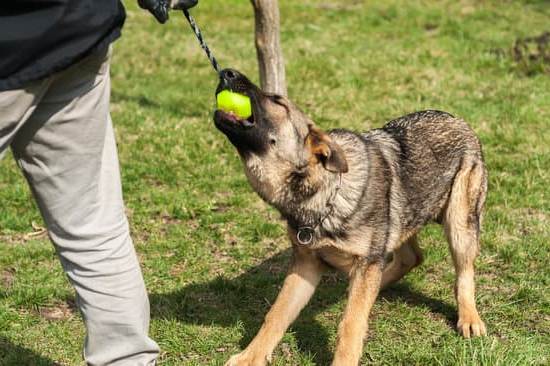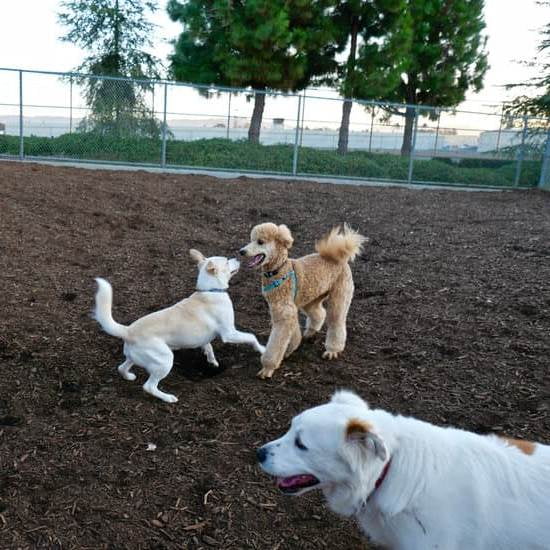Dog training tools are essential for instilling discipline and obedience in our furry companions. Whether you have a new puppy or an older dog, using the right training tools can make a significant difference in their behavior and overall development.
These tools not only help in teaching basic commands but can also address specific behavioral issues and cater to individual breed needs. In this article, we will delve into the various types of dog training tools available, from basic collars and leashes to advanced electronic collars and treat dispensers.
Understanding the importance of dog training tools is crucial for every pet owner. The right tools not only aid in teaching good behavior but also strengthen the bond between you and your canine companion. From teaching them how to walk on a leash without pulling to addressing excessive barking or digging, the proper use of training tools can greatly enhance your dog’s overall well-being and your relationship with them.
In the following sections, we will explore the different categories of dog training tools available, ranging from basic essentials like collars and leashes to more advanced electronic devices. We will also discuss DIY options for those who prefer a more hands-on approach, as well as specialized tools tailored to address specific behaviors and breed-specific needs.
Additionally, we’ll touch upon how technology has revolutionized dog training, offering apps, video monitoring, and virtual training programs that provide innovative solutions for pet owners.
Basic Dog Training Tools
When it comes to training a dog, having the right tools is essential for success. Basic dog training tools such as collars, leashes, clickers, and whistles are the foundation of any training program. These tools are essential for teaching your dog basic obedience commands and establishing boundaries.
Collars and leashes are fundamental for controlling your dog during walks and providing guidance when teaching them commands. Clickers are effective for marking desired behaviors and reinforcing positive actions, making it easier for your dog to understand what you expect from them. Whistles can be used for long-distance communication and recall training, especially in outdoor environments where verbal commands may not be as effective.
In addition to being essential for basic obedience training, these tools are also helpful in building a strong bond between you and your pet. Investing in high-quality dog training tools will not only make the training process more effective but also ensure the safety and well-being of your furry companion. It’s important to choose the right tools that align with your dog’s temperament and learning style to achieve optimal results in their training program.
Advanced Dog Training Tools
When it comes to advanced dog training tools, there are a variety of options available that can help pet owners effectively train their dogs. From electronic collars to treat dispensers and remote training systems, these tools offer innovative solutions for addressing specific behavior issues and improving overall obedience. Here are some of the most popular advanced dog training tools:
- Electronic Collars: Also known as e-collars or shock collars, these devices provide a way to deliver a harmless static correction or vibration to your dog from a distance. When used correctly and responsibly, electronic collars can be an effective tool for teaching commands and addressing behavioral problems.
- Treat Dispensers: Treat dispensing toys or devices are designed to reward your dog with treats for good behavior. These tools are especially useful for positive reinforcement training, as they allow you to reward your dog instantly when they exhibit the desired behavior.
- Remote Training Systems: Remote training systems typically consist of a handheld remote and a receiver collar worn by the dog. They allow you to deliver commands, corrections, or rewards from a distance, making them particularly useful for off-leash training and behavior modification.
In addition to these advanced dog training tools, there are also DIY options that pet owners can consider for more personalized training methods. By incorporating a combination of different tools and techniques, you can tailor your approach to best suit your dog’s individual needs and behaviors.
Whether you choose electronic collars, treat dispensers, remote training systems, or homemade agility equipment, it’s important to evaluate the effectiveness of each tool in order to choose the right one for your dog’s training needs.
DIY Dog Training Tools
Dog training tools can come in many forms, including those that you can create yourself at home. DIY dog training tools not only provide a cost-effective solution for pet owners, but they also allow for customization to fit your dog’s specific needs and behavioral challenges. Here are some homemade agility equipment and training aids that you can easily make at home:
- Agility Hurdles: Create hurdles using PVC pipes and connectors. These hurdles can be adjusted to different heights to help improve your dog’s jumping and agility skills.
- Balance Beam: A simple balance beam can be made using a long, sturdy piece of wood or even a thick tree branch. This aids in improving your dog’s coordination and balance.
- Tug Toys: Tug-of-war is a great way to engage with your dog and also build their strength. You can easily make tug toys using old t-shirts or ropes.
These DIY training tools not only provide physical exercise for your dog but also mental stimulation, which is essential for their overall well-being. Engaging in these activities with your furry friend creates a stronger bond between you and also helps to reinforce positive behaviors.
Creating homemade agility equipment and training aids allows pet owners to tailor the tools specifically to their dog’s individual needs. Whether it’s addressing specific behavior issues or providing additional physical and mental stimulation, DIY dog training tools offer a personalized approach to canine training. By incorporating these homemade tools into your regular training routine, you can see significant improvements in your dog’s behavior and overall well-being without breaking the bank.
The Best Dog Training Tools for Specific Behaviors
When it comes to addressing specific behaviors in dogs such as barking, digging, and jumping, having the right tools can make a significant difference in training effectiveness. For barking issues, anti-bark collars can be useful tools to help discourage excessive vocalization.
These collars emit a gentle spray of citronella or emit an ultrasonic sound when the dog barks, serving as a deterrent for this behavior. Another effective tool for addressing barking is a clicker combined with positive reinforcement training techniques.
For digging problems, one of the most effective dog training tools is a sandbox or designated digging area in the yard. By redirecting the dog’s natural inclination to dig towards a specific spot, you can minimize unwanted digging in flower beds and other areas of the yard. Additionally, providing mental stimulation through puzzle toys and interactive feeders can also help address behavioral issues like excessive digging.
Finally, for jumping behaviors, basic obedience training tools such as leashes and treats can go a long way. Teaching your dog commands like “sit” and “stay” using these tools can help address jumping up on people or furniture. Utilizing treat dispensers during training sessions can also reinforce positive behavior and discourage jumping.
While each dog is unique and may require different approaches to behavior modification, having the right dog training tools at your disposal can greatly aid in effectively addressing specific behaviors.
| Dog Training Tool | Behavior Addressed |
|---|---|
| Anti-Bark Collars | Barking |
| Sandbox or Designated Digging Area | Digging |
| Treat Dispensers | Jumping |
Training Tools for Different Dog Breeds
Different dog breeds have different needs when it comes to training. Each breed has its own unique characteristics, behaviors, and tendencies that should be taken into consideration when choosing the right training tools. Understanding the specific needs of your dog’s breed will help you tailor your training approach for better results.
Understanding Breed Characteristics
It is important to research and understand the typical characteristics of your dog’s breed. For example, herding breeds such as Border Collies and Australian Shepherds may respond well to tools that engage their natural herding instincts, while hunting breeds like Labrador Retrievers or Beagles may benefit from tools that tap into their strong sense of smell.
Choosing the Right Tools
Once you have a good understanding of your dog’s breed characteristics, you can then choose the right training tools accordingly. For example, if you have a high-energy breed such as a Husky or a German Shepherd, agility equipment such as tunnels and hurdles can provide physical and mental stimulation during training sessions.
Adapting Training Methods
Different breeds may also require different training methods. For example, while positive reinforcement works well for most breeds, some working breeds may respond better to more structured and disciplined training techniques. By tailoring your approach and using the right dog training tools for your specific breed, you can effectively address their natural instincts and tendencies for successful outcomes in their training.
Using Technology for Dog Training
Apps for Dog Training
In today’s digital age, there is a wide range of apps available to assist with dog training. These apps offer features such as step-by-step training guides, behavior tracking, and even virtual consultations with professional trainers. Some popular apps include clicker training apps, obedience training apps, and even games that help improve cognitive skills in dogs. These apps can be a convenient tool for dog owners to have access to expert guidance and resources right at their fingertips.
Video Monitoring for Training
Video monitoring systems have become a valuable tool for dog owners who want to keep an eye on their pets while they are away or monitor their behavior during training sessions. Video cameras with live streaming capabilities allow trainers to observe their dog’s behavior in real time and make any necessary adjustments to their training approach.
Video monitoring also provides the opportunity to review footage and analyze the dog’s progress over time, making it easier to identify areas for improvement.
Virtual Training Programs
Virtual training programs offer a unique opportunity for remote learning and guidance from professional trainers. These programs often include live virtual classes, one-on-one video consultations, and interactive training modules that cover a wide range of behavioral issues and obedience training.
Virtual training programs can be particularly beneficial for dog owners who may not have access to local trainers or prefer the convenience of online instruction. With the use of video conferencing technology, virtual training programs provide personalized feedback and support tailored to each dog’s specific needs.
Using technology for dog training has revolutionized the way we approach canine behavior modification and obedience training. Apps, video monitoring systems, and virtual training programs offer innovative solutions for addressing behavioral issues and improving communication between dogs and their owners. It’s important for dog owners to explore these modern tools as part of an effective and comprehensive approach to their pet’s training regimen.
Evaluating the Effectiveness of Dog Training Tools
In conclusion, the effectiveness of dog training tools varies depending on the specific needs and behaviors of your furry companion. When choosing the right tools for your dog’s training, it is essential to consider factors such as their breed, age, and behavior tendencies.
Whether you are opting for basic tools like collars and leashes, advanced electronic collars and remote training systems, or even DIY homemade agility equipment, it is crucial to assess how these tools can address your dog’s unique training requirements.
One key factor to consider when evaluating the effectiveness of dog training tools is understanding your dog’s individual behavior and temperament. For example, if your dog tends to bark excessively or dig in the yard, specific tools such as anti-barking collars or interactive toys may be more suitable. Additionally, tailoring the approach to different dog breeds is important as their inherent traits may require different types of training methods and tools.
In today’s digital age, technology has also made its way into the world of dog training with apps, video monitoring systems, and virtual training programs. These can be valuable tools for pet owners looking to supplement traditional training methods.
However, it is important to remember that no tool can replace consistent positive reinforcement and patience when it comes to effectively training a dog. By carefully evaluating your dog’s needs and behavior tendencies, you can choose the most appropriate dog training tools that will lead to successful outcomes in your furry friend’s development.
Frequently Asked Questions
What Is the Best Device to Train a Dog?
The best device to train a dog depends on the specific needs and behaviors of the dog. Some popular options include clickers for positive reinforcement, treat pouches for rewards, and no-pull harnesses for leash training.
What Equipment Do You Need to Train a Dog?
When training a dog, it’s important to have the right equipment on hand. This may include a comfortable leash and collar, treats for positive reinforcement, toys for interactive play, a clicker or whistle for training cues, and possibly a crate or baby gate for containment.
What Are the 5 Steps to Train a Dog?
There are five key steps to effectively train a dog. First, establish rules and boundaries to set clear expectations. Second, use positive reinforcement like treats or praise to reward good behavior. Third, be consistent in your commands and actions. Fourth, practice obedience training regularly to reinforce learning. Finally, be patient and understanding throughout the training process.

Welcome to the blog! I am a professional dog trainer and have been working with dogs for many years. In this blog, I will be discussing various topics related to dog training, including tips, tricks, and advice. I hope you find this information helpful and informative. Thanks for reading!





